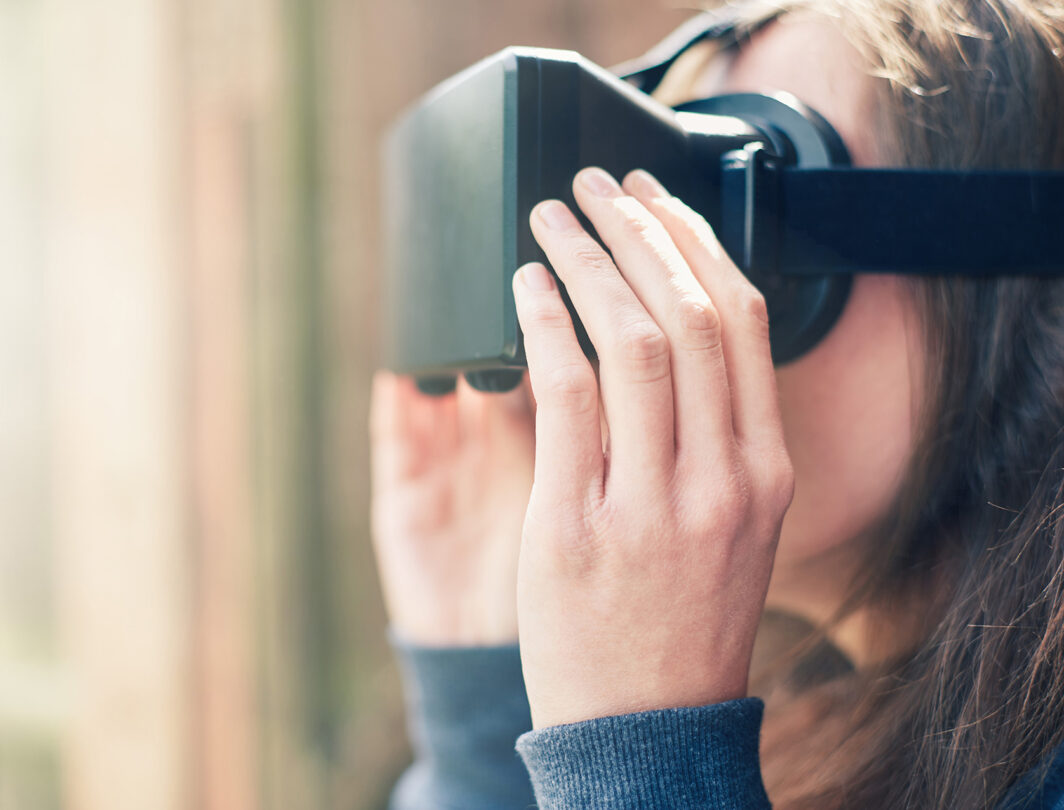People & Leadership
Are robots and VR the future of hiring talent?
"The first stage of the hiring process doesn't start with the job vacancy itself but rather with your company’s people marketing. Is your company an organization that people want to work for/are attracted to?"

What kind of tasks could be automated through augmented intelligence?
Maybe a robot could make your coffee every morning. Or arrange your diary on your behalf. How about hire people in your company?
We’re not expecting the robots to take over any time soon. But the rise in technology and automation will certainly have some impact on HR and people teams in the hiring process.
Today, the fierce competition for talent has catapulted companies into adopting new approaches to improve their candidate experiences and save time on the recruitment process.
But how?
And what is the impact of virtual reality (VR) and augmented intelligence (AI) in the hiring process?
Using virtual reality to attract talent
Virtual reality (VR) can help to attract talent in the first instance, enabling candidates to see what it would really be like to work at companies.
Deutsche Bahn, a German railway company, needed to acquire 10,000 people each year as it saw many of its existing employees reach retirement age – so it got creative and began taking VR headsets to career fairs.
This allowed people interested in working for Deutsche Bahn to experience various roles at the company. For example, they could follow a train electrician through their daily routine.
The approach worked.
Before the technology was introduced, Deutsche Bahn got, on average, 10 applicants from any one fair.
With the VR, it received 50 to 100 applicants.
Moreover, the applicants were much more engaged with the recruitment process because they knew what they were applying for.
Equally, food company General Mills employs the same tactic using a 360-degree camera to shoot scenes all over the company headquarters and surrounding area to show potential recruits at trade fairs what the company is like.
Introducing innovative ways to experience life working at an organisation, if done right, can help candidate have better experiences going through the recruitment process – and help build your employer brand.
It reflects the importance you place on candidate and workforce experiences, and reflects the company as forward-thinking and innovative.
Selecting the right resume with a little help of augmented intelligence
Once you have attracted talent and the resumes come in, there is a big job to be done of sifting through them.
This is where AI comes into its own.
Really, when people talk about artificial intelligence, they mean augmented intelligence.
The former is the replacement of humans with computer systems; the latter is using technology designed to assist humans, not replace them.
It goes without saying that we can’t take the ‘human’ out of human resources.
The role of AI is to help humans make better and quicker decisions in line with the business strategy – not to replace them entirely.
Augmented intelligence can be used to enhance existing automation processes, giving HR and people teams time to focus on the more important job of attracting and engaging the best candidates, and towards achieving the organisation’s business goals.
Finding strong candidates among a giant talent pool is one of the biggest and most time-consuming challenges talent managers face.
AI algorithms can be used to search resumes for keywords and other factors that match those of successful past hires, to create a shortlist of candidates, not only reducing the HR professionals time spent sifting through resumes, but also eliminating any bias that a human might hold.
Recruiters take six seconds on average to screen a resume. They aren’t necessarily taking the time to think about the person behind it.
AI programs don’t get tired and overlook important indicators that someone might be right for the job.
Modern systems can also help recruiters sift through resumes thoroughly, and ensure that the best candidates are identified in a much more efficient way.
Communicating with candidates using AI and VR
Apart from selecting resumes, corresponding with candidates is another extremely time-consuming task for HR professionals.
As with the resumes, augmented intelligence can step in to help, this time in the form of chatbots.
Chatbots are already used in the food and retail industries to help people place orders, ask questions and make complaints.
The same technology can be used to schedule interviews and answer job candidates’ frequently asked questions.
Chatbots can be used to answer frequently asked questions such as:
- Where will the interview be?
- What do I need to bring?
- How many interviews will I have?
- When will you make a decision?
This frees up HR’s time to focus on the onboarding process and creating great candidate experiences.
Onboarding with a little help from the bots
Once a successful candidate has been selected, both or either VR and AI can be used to help with onboarding.
VR can be used for training new recruits – the US military uses VR to train and prepare soldiers for different combat situations exposing them to a wider variety of training scenarios with less time and cost than field training.
Equally, an AI chatbot in the form of an app downloadable on a new starter’s mobile phone could even walk them around the building, share company policies and answer common questions along with the people team, to help build a great onboarding experience for the employee.
It’s not rise of the robots
VR and AI offer assist in creating a better candidate experience with the added bonus of saving HR professionals valuable time – time that can be used more effectively to focus on people management and strategy.
However, VR and AI are not magic dust – they are just another advancement in technology.
It’s not about replacing human beings with technology, but making it easier for HR and people teams to get the most from technology, and as a result, produce better outcomes for the business.
Ultimately, technology such as VR and AI are an addition, not a substitution and it is still extremely important that HR retains and prioritises human judgment and contact – with a little bit of help from technology.






